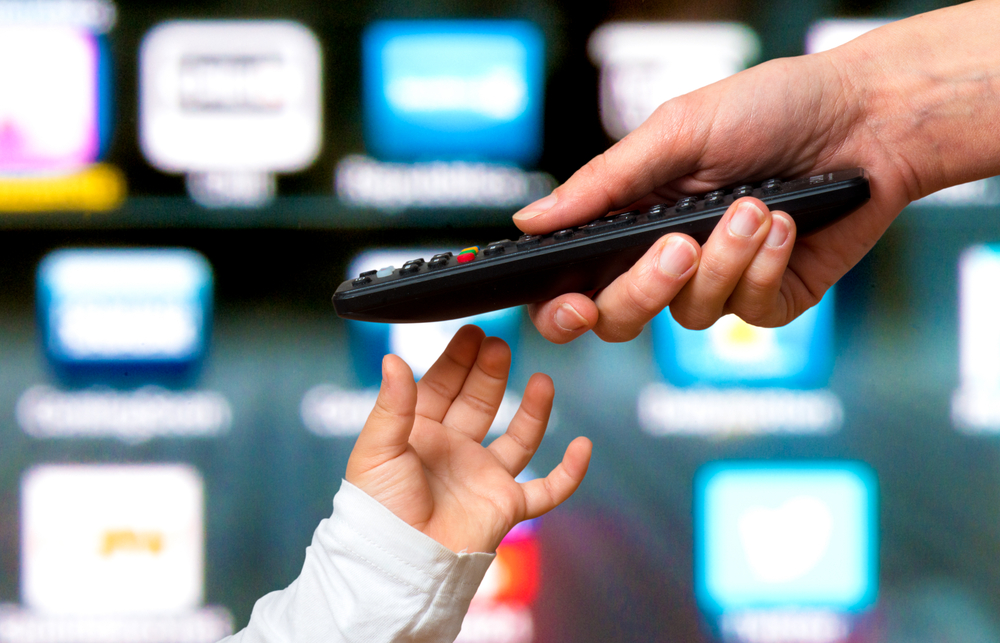
If you’re like most parents, you may feel frustrated when something as innocent and simple as turning on your smart TV can display gory images from ads for horror movies or suggestions for suggestive—or even outright raunchy—content on the home screen before you even navigate to your preferred apps and platforms.
While parental controls within streaming platforms don’t kick in until you open their apps, there is good news: Many smart TVs have parental control options and settings built right into their operating systems.
Below we discuss some of the settings parents can make on many of the most popular brands of smart TVs. Combining these parental controls on smart TVs with in-app settings enhances protection—and gives peace-of-mind to parents as they and their families enjoy Northern Lights Fiber’s high-speed fiber internet and pristine streaming quality!
Smart TV’s With Parental Control Settings
We begin with popular smart TVs that have parental control settings: LG and Samsung, as well as Google TV, which is preinstalled on many well-known smart TV brands such as Sony. Many other brands, including Fire TV, offer similar parental controls (and similar ways of establishing them), so we present these brands as models for exploring your options.
In general, you can search for safety, security and parental controls in the Settings Menu of any of the models below. Some brands include more features than others, so check each of them out carefully before buying a new model.
LG Smart TV’s
Most LG smart TVs made over the last several years have a few key features to help parents feel more comfortable about letting their children use their television. Specifically, parents can lock channels out entirely, block visual and sound content of certain channels, block programming with certain TV content ratings, and even block access to particular apps. LG also lets parents block inputs to other devices as well, giving an extra layer of protection against “work-arounds” a clever child may attempt.
LG uses the most common way smart TVs enable parental controls: the establishment of a PIN and passwords. Parents simply need to set up a PIN to create and manage the protections—and make sure they don’t share that PIN or password with their child! Though it’s probably obvious, be sure to choose a PIN or password that your child isn’t already aware of or cannot easily guess.
Set up is easy: simply navigate to the Settings symbol on the Menu, then click on System Settings, then to Safety Settings, and establish the password or PIN. From there, you can block channels or apps or block out content based on content ratings.
Google TV (Preinstalled on many Sony, TCL, and Hisense Smart TV models)
Next on our list is the increasingly popular Google TV, an operating system that is preferred by many customers for its easy integration within the Google ecosystem of apps and smart home devices, like Google Nest. You can find Google TV on many brands of popular smart TVs, including Hisense, Sony, and TCL, and on some Chromecast models.
Google TV has an option many parents will immediately appreciate: the ability to establish Restricted Profiles. Through Google TV’s Restricted Profiles, you can set content restrictions and limit what younger members of your family can watch when on their profile.
The only “downside” to Google TV’s approach is that parents (or any older viewer) need to remember to set the TV back to “Restricted Profiles” whenever the parent’s “unrestricted” use is complete. That way, when your children turn on the TV, they will immediately be in the Restricted Profile, with all the protections and limitations you previously established for their profile.
Samsung TV
Lastly, we consider Samsung, another popular smart TV. Like the LG smart TV discussed above, Samsung also lets parents set up a PIN or password to block channels or limit content to particular ratings.
Just follow these simple steps: First, head to your Menu and go to Settings. From there select Broadcasting, and then choose Program Rating Lock Settings. Next, create your PIN. Finally, choose your settings and limitations.
Other Parental Protections to Consider
Beyond setting up parental controls, PINs, restricted profiles and other limitations and protections within a smart TV, parents should also remember that there are other steps they can take as well. Most apps, like Netflix, have built in parental settings, including user profiles. These profiles can be set to filter content that is less-than kid-appropriate, while still allowing other users to stream what they want in their own PIN-protected profile.
Additionally, streaming sticks and boxes also have parental control settings and options, beyond just the individual apps. Recall that streaming sticks and boxes can turn any TV with an HDMI connection into a smart TV. Roku and Apple TV are two ever-popular streaming devices, and both have settings and restrictions parents can implement.
Protect IQ and Experience IQ from Northern Lights Fiber
Northern Lights Fiber’s ProtectIQ and ExperienceIQ are like superheroes for parents managing Smart TVs. ProtectIQ protects your devices from viruses, blocks malicious sites, and keeps sensitive info secure from cyber criminals – and from little eyes. And ExperienceIQ? It’s the sidekick that makes everything easy to manage from anywhere. With ExperienceIQ, parents can set time limits for their kids to watch, game, or use social sites online. You can filter apps and websites, monitor household/family online usage, and more. So, with these awesome features, you can relax knowing you’ve got the tools to create a safe and fun TV zone just right for your family! Just ask us about adding the ProtectIQ/ExperienceIQ bundle to your new or existing internet plan from Northern Lights Fiber.
By employing these recommendations, parents can breathe a bit more easily as they stream on Northern Lights Fiber’s advanced fiber network. And for more tips on staying safe online, follow Northern Lights Fiber’s social pages!
